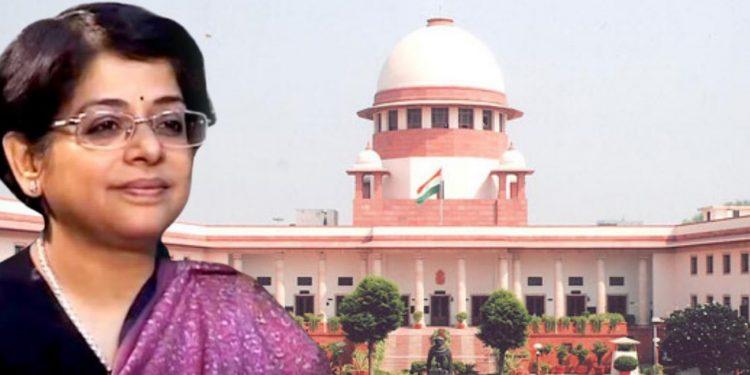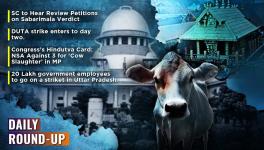Sabarimala Judgment: The Limits of ‘Expanding’ Law

The Sabarimala issue and judgment has been one of the critically analysed orders since its pronouncement. The authors, students of Jindal Global School, argue for a realist, rather than a positivist, reading of the law in context of Sabarimala Temple judgment.
——–
Laws and judgments are best understood when placed in the time and space in which they were formulated and their subsequent application. The July 15, 2020 majority bench (6-3) decision of the Supreme Court of the United States (“SCOTUS”) in Bostock v Clayton interpreted ‘sex’ as in Title VII of The Civil Rights Act of 1964 to include `sexual orientation’. The judgment held that the Act would prohibit discrimination not only based on one’s apprehended sex, but also on sexual orientation. The decision was hailed as a positive step in protecting the rights of gender non-conformists and the LGBTQI+ community.
While the ruling was indeed praiseworthy and progressive, was the majority interpretation of Title VII of The Civil Rights Act of 1964 sound? The dissenting view of the three judges on the bench was that when the Civil Rights Act was passed in 1964, sexual orientation and transgender were not known to those who drafted the law. That is why the Act did not mention discrimination under these two categories. In fact, Justice Samuel Alito in his dissenting judgment noted: “There is only one word for what the Court has done today: legislation.” Another dissenting judge, Justice Brett Kavanaugh, while acknowledging that gay and lesbian Americans had fought hard to end discrimination, also made this observation: “Under the Constitution’s separation of powers, however I believe that it was Congress’s role, not this Court’s to amend Title VII (of the Civil Right Act 1964).”
Justice Indu Malhotra’s dissent in Sabarimala was along similar lines, where she argued that Article 17 be strictly understood in terms of caste.
Similar questions pertaining to populism, the expansion and interpretation of law and the Constitution have also been raised in India. For example, was Justice Chandrachud’s expansion of Article 17 (Abolition of Untouchability) in the 2018 Sabarimala Judgement and the Clayton judgment similar?
“Untouchability” in Sabarimala
Indian courts have dealt with interpretations of “sex” in the petitions filed by the NGO, Naz, National Legal Services Authority (NALSA) and private petitioner Navtej seeking de-criminalisation of homosexuality.
Both Naz and Navtej read sexual orientation into ‘sex’ under Article 15 (which prohibits discrimination of Indians on basis of religion, race, caste, sex or place of birth). They reasoned that discrimination on basis of sexual orientation is reinforced by stereotypical judgments and generalisations about the conduct of sex. In the NALSA petition, the Supreme Court recognised the legal rights of the transgender community and held ‘gender identity’ to be an innate component of “sex” appearing in Article 15 and 16, “person” in Article 14 and “citizen” in Article 19. The court here expanded the Constitutional meaning of “sex”. In Clayton, however, expanding the specific meaning of “sex” could have serious repercussions just as “untouchability” in Article 17 might.
After years of struggle, the Supreme Court in 2018 declared unconstitutional the banning of menstruating women from the shrine at the Ayyappa Temple in Sabarimala. The majority stressed that women must be treated equally with men under Articles 14 and 15 and affirmed their right to freedom of religion under Article 25. The petitioners and the amicus also argued that Article 17 of the Constitution prohibited untouchability “in any form”, therefore it covered the current case as well. The bench was divided on this question. Justice Nariman disallowed this interpretation as the facts of this case “would not directly arise for decision.” Justice Chandrachud, however, welcomed it. He opined that discriminating against menstruating women would constitute “untouchability” under Article 17.
Justice Kavanaugh, in Clayton case, cautioned against literally interpreting texts rather than ordinarily and purposively interpreting them in accordance with their plain meaning.
The logic in equating Clayton and Sabarimala goes beyond academic banter. The similarities in the expansion are striking when we consider the reverberations of the dissenting judgments offered in both. While the questions fundamentally differ, since one concerns statutory interpretation and the other a Constitutional one, the common thread sewing both together is that of history.
Lessons from Clayton dissent
In Clayton, the majority dismissed intent by arguing that the “limits of the drafters’ imagination supply no reason to ignore the law’s demands.” Justice Chandrachud, too, dissected the intent of our Constituent Assembly. He concluded from their debates that there was no consensus among them on the meaning of untouchability. This, he claimed, was deliberate so as to broaden the horizon of the term. He even cited K.M. Munshi’s speech highlighting the importance of placing “untouchability” in Article 17 within parenthesis. H.M. Seervai in ‘Constitutional Law of India’ had also noted that “untouchability” is placed within parenthesis in Article 17 and the Untouchability Offences Act, 1955. However, Chandrachud dismissed it is as a mere punctuation mark incapable of circumscribing a specific meaning.
While acknowledging Ambedkar’s contribution to annihilate the caste hierarchy, Justice Chandrachud proceeded with widening Article 17. He took Article 17’s roots of “purity and pollution” along with a literal interpretation of the phrase “in any form” to advance this provision to the exclusion of menstruating women. This was despite the Madras HC’s ruling in Devarajiah v Padmanna that had acknowledged the relevance of placing “untouchability” within inverted commas. They read Untouchability not in “a literal or grammatical sense but the practice of it as it developed historically in the country.” Seervai has also argued that the subject matter of Article 17 is untouchability as the practice historically, and not its literal or grammatical meaning.
When the defendants in Clayton argued the deliberate exclusion of sexual orientation and gender identity from the Act, the majority dismissed it by claiming that Title VII is broad enough to rule out all forms of discrimination arising out of sex. Justice Alito’s reasoned dissent argues that there were several bills passed post the Civil Rights Act’s promulgation that purported to amend Title VII by adding sexual orientation to the list, which was rejected. He said that the original lawmakers could not have envisaged “discrimination because of sex” to include “discrimination because of sexual orientation.” He pointed out that the phrase “discrimination because of sex” in Title VII was no accident because it emerged from “a long history of women’s rights advocacy” that strove to achieve “fully equal rights for women.” Justice Kavanaugh, the other dissenting judge, cautioned against literally interpreting texts rather than ordinarily and purposively interpreting them in accordance with their plain meaning.
Tracing a text back to the “original intent” is dangerous and can stagnate a developing society such as ours. It is for this reason that a transformative interpretation through expansion (with time and circumstance) becomes indispensable.
Justice Indu Malhotra’s dissent in Sabarimala was along similar lines, where she argued that Article 17 be strictly understood in terms of caste. In advocating against literal interpretation, she cites academics, precedents, and debates of the Constituent assembly to make her point. She even stresses on the lack of other precedents that grant Article 17 an alternative meaning. Similarly, Justice Kavanaugh said that even if we do not give in to “subjective intentions” of legislators, ordinary meaning of phrases are encoded within history and a deviation would dilute it. The women’s rights movement was not the gay rights movement.
The importance of the movement abolishing untouchability was Ambedkar’s mission through Article 17. Anand Teltumbde in ‘Persistence of Caste’ highlights how Ambedkar led the Dalit rebellion, securing a political space for them under the new Constitution. He even says that our Constitution “bears a distinct imprint of Ambedkar’s ideology.”
Realist, over positivist, reading of the law
In Clayton, the outcomes are desirable, yet the rationale begs the question of the motive behind their reasoning. Given the resurgence of civil rights debates, perhaps the Court was hard-pressed not to argue in any other way. We do not advocate a positivist reading of the law, but a realist one. Tracing a text back to the “original intent” is dangerous and can stagnate a developing society such as ours. It is for this reason that a transformative interpretation through expansion (with time and circumstance) becomes indispensable.
The Supreme Court did wonders in expanding ‘sex’ under Article 15 – not merely because of the outcome, but because their rationale for doing so was sound and possible. They also brought justice to women in lifting the ban from entering the temple, but this would have been possible with reading Articles 14, 15, and 25 alone and not expanding Article 17.
(The authors are final year law students at Jindal Global Law School. Views are personal)
This article was first published in The Leaflet.
Get the latest reports & analysis with people's perspective on Protests, movements & deep analytical videos, discussions of the current affairs in your Telegram app. Subscribe to NewsClick's Telegram channel & get Real-Time updates on stories, as they get published on our website.



















